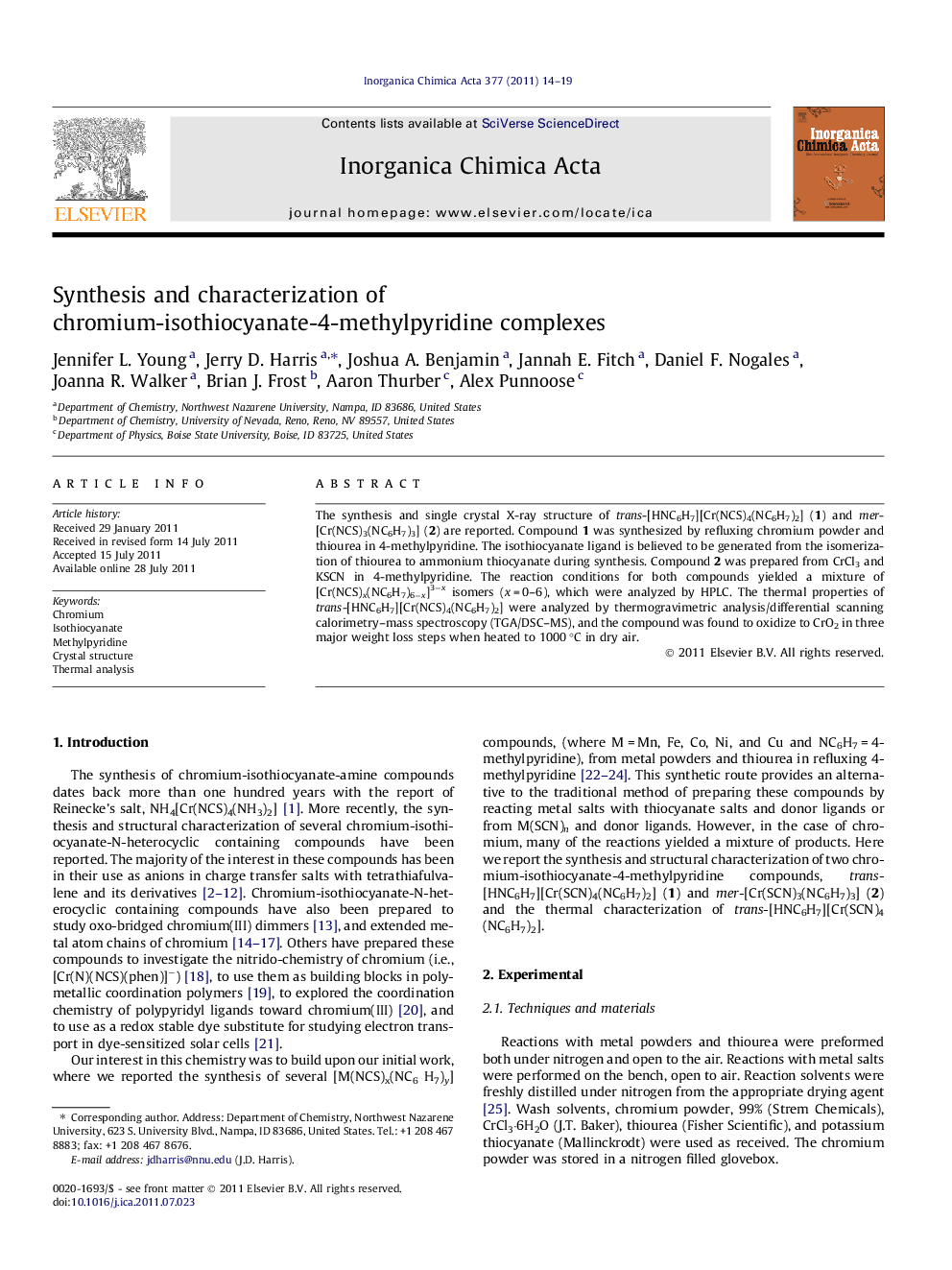| Article ID | Journal | Published Year | Pages | File Type |
|---|---|---|---|---|
| 1312522 | Inorganica Chimica Acta | 2011 | 6 Pages |
The synthesis and single crystal X-ray structure of trans-[HNC6H7][Cr(NCS)4(NC6H7)2] (1) and mer-[Cr(NCS)3(NC6H7)3] (2) are reported. Compound 1 was synthesized by refluxing chromium powder and thiourea in 4-methylpyridine. The isothiocyanate ligand is believed to be generated from the isomerization of thiourea to ammonium thiocyanate during synthesis. Compound 2 was prepared from CrCl3 and KSCN in 4-methylpyridine. The reaction conditions for both compounds yielded a mixture of [Cr(NCS)x(NC6H7)6−x]3−x isomers (x = 0–6), which were analyzed by HPLC. The thermal properties of trans-[HNC6H7][Cr(NCS)4(NC6H7)2] were analyzed by thermogravimetric analysis/differential scanning calorimetry–mass spectroscopy (TGA/DSC–MS), and the compound was found to oxidize to CrO2 in three major weight loss steps when heated to 1000 °C in dry air.
Graphical abstractThe synthesis and characterization of [Cr(NCS)x(NC6H7)6–x]3–x (x = 1–6) compounds from Cr powder and thiourea is presented.Figure optionsDownload full-size imageDownload as PowerPoint slideHighlights► Cr powder and thiourea in refluxing 4-methylpyridine yield multiple products. ► Reactions products were analyzed by HPLC. ► [Cr(NCS)4(NC6H7)2]− and [Cr(NCS)3(NC6H7)3] were characterized by crystallography. ► [HNC6H7][Cr(NCS)4(NC6H7)2] was characterized by TGA/DSC–MS. ► [HNC6H7][Cr(NCS)4(NC6H7)2] decomposes to CrO4 when heated in air to 1000 °C.
